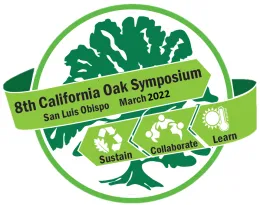#57

Examining abiotic and biotic factors influencing specimen black oaks (Quercus kellogii) in northern California to reimplement traditional ecological knowledge and promote ecosystem resilience post-wildfire
Cory J. O’Gorman, Department of Biology, Sonoma State University
Dr. Lisa Bentley, Sonoma State University, Biology Department; Dr. Daniel Crocker, Sonoma State University, Biology Department; Margaret Purser, Sonoma State University, Anthropology Department; Clint McKay, Pepperwood Preserve, Wappo/ Pomo/ Wintun, California Indian Basket Weaving Association
California black oak, Quercus kelloggii, plays an important role in the lifeways of many indigenous tribes throughout California. Native peoples tend black oaks using Traditional Ecological Knowledge (TEK) to encourage the development and proliferation of specimen oaks. These mature, large, full crowned trees provide a disproportionate amount of ecosystem services, including acorns and habitat, when compared to smaller black oaks. Altered approaches to land management and the cessation of frequent low intensity cultural burns places these specimen oaks at risk from encroachment, forest densification, and severe wildfire. This project is a collaboration between academic researchers and a Native Advisory Council to examine abiotic and biotic factors influencing Quercus kellogii to reimplement traditional ecological knowledge and promote ecosystem resilience post-wildfire. Data were collected from 55 specimen black oaks at Pepperwood Preserve in northeast Sonoma County. Specifically, we classified specimen oak growth habitat by measuring specimen oak crown area and live crown ratio, the size and number of surrounding trees and amount of surface and ladder fuel loads. The preserve burned in both the Tubbs Fire in 2017 and the Kincade Fire in 2019, the latter of which occurred three months after the completion of the initial data collection. Immediately following the Kincade Fire we measured scorch height and related our abiotic and biotic variables to fire severity. Forest densification was found to have a significant negative effect on both canopy area (p=0.003) and live crown ratio (p=0.038) of the specimen oaks. Densification did not affect surface and ladder fuel load accumulation since the Tubbs Fire in October 2017 (p>0.05). Neither surface and ladder fuels nor forest densification variables significantly affected scorch height on the specimen oaks (p>0.05) following the Kincade Fire.
